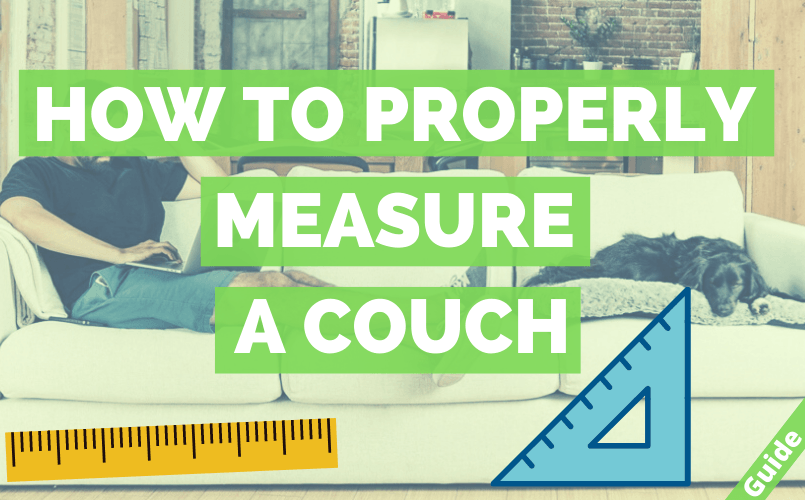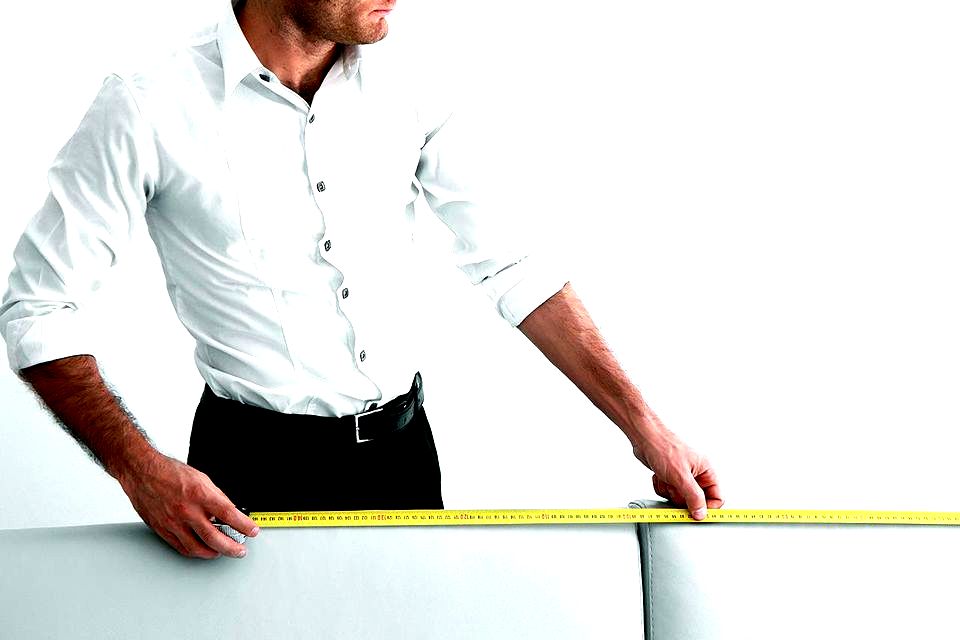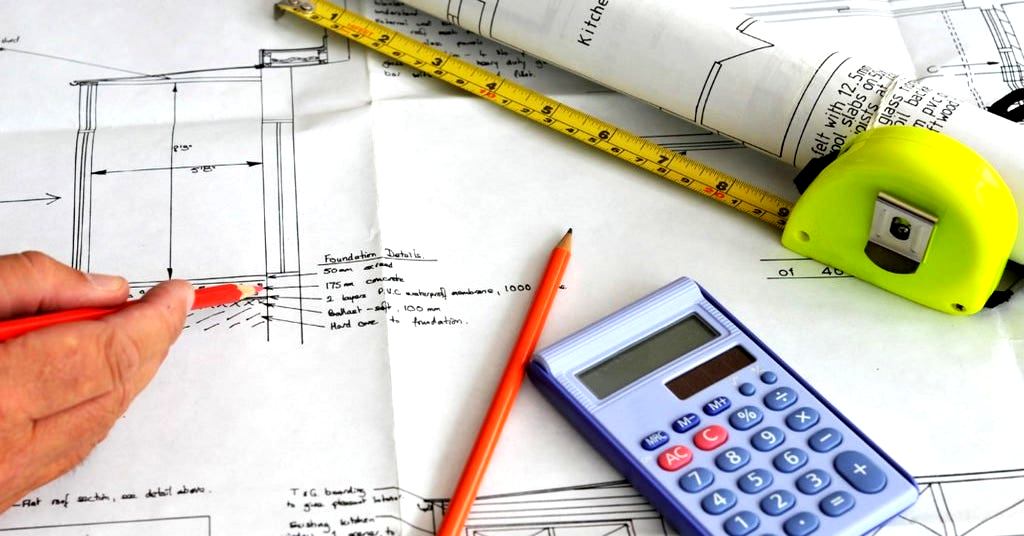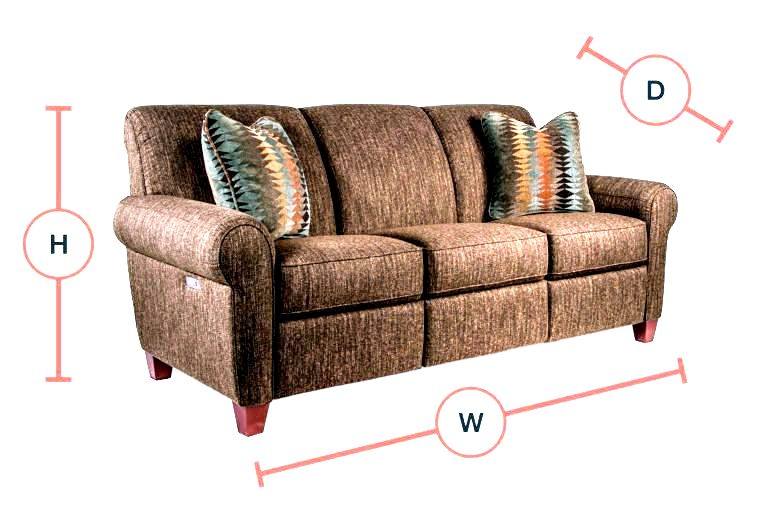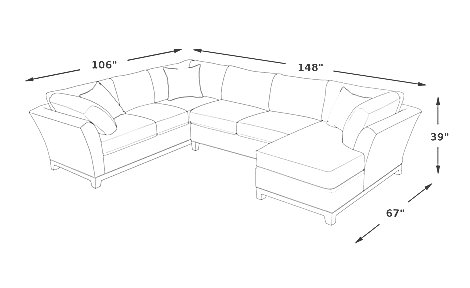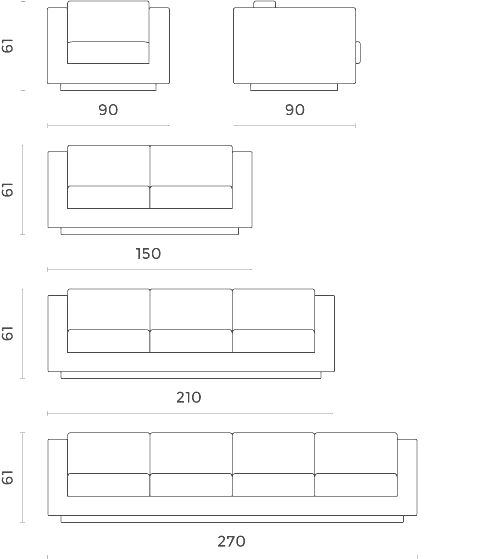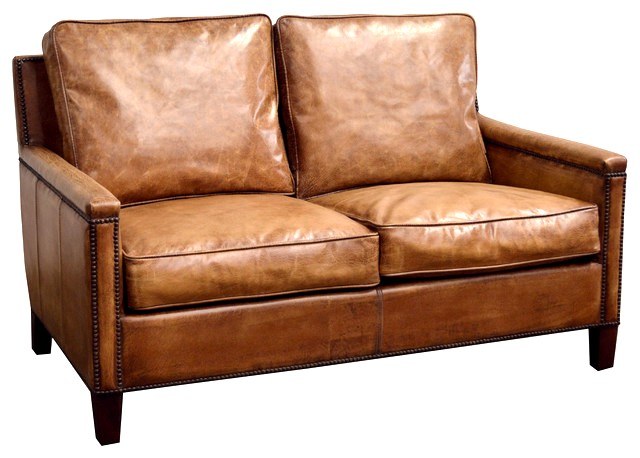Do you know how most people buy sofas?
They go online and spend hours looking at models. They read endless reviews about the cushion’s firmness vs. their softness. They debate whether they should sacrifice cushiony comfort for firm support that alleviates back pain.
Then they spend hours looking at colors and fantasizing about binge-watching Netflix or napping on their new sofa.
After all that wasted time, one look at the sofa’s measurements sets their dreams on fire.
Avoid wasting your time and possibly losing money by sending your couch back. Measure your living room, dining room, your home office, and sofa before ordering a model.
Here’s the complete guide on how to do it.
Importance of Taking Measurements
It’s important to take the couch dimensions into account before making your purchase to ensure that your product can fit through a door.
Knowing the dimensions in cm or inches helps the delivery of people who will get the sofa inside. Unfortunately, many people return new furniture because they can’t get it in the house.
Measuring is also essential for ensuring that the sofa will fit in your living room. L-shaped sofas, for instance, are more difficult to arrange snuggly inside your room because you have to place them near two walls.
Take the other furniture into account if you want your room to have balanced proportions and a smooth décor.
Other important reasons for taking proportions are:
- For reupholster
- For a cover
- For a throw
Measuring Your Home
This guide starts with measuring your home. Begin at your front door and then consider all the passages, additional doors, rooms, and stairways that your divan will go through before reaching its destination room.
Measure Your Space
Here’s how to measure the width for furniture placement: write down the height, length, and W of your room. Other measurements essential for moving and for delivery are doors and hallways.
If your couch is a tight fit, the moving people might remove its feet to squeeze it into the desired location.
Summary: Write down the width, length, and depth of your room, as well as all the rooms, entryways, and hallways your couch will pass through.
Tape the Area
Once you’ve done all that, choose where the sofa’s place will be.
The rule of thumb is to allow enough room for walking around it.
Use tape to get a visual representation of what your room will look like after it is set up. If you’re not happy with this setup, repeat it until you are.
Remember that a sectional, a corner couch, a curved sectional, and a curved corner couch have different space requirements.
Summary: Enclose the area where your couch will stay with tape to get a good visual of how your room will look.
Measure the Area
Now it’s time to measure the taped area properly. It’s unlikely the standard bedroom furniture proportions will fit with your taped area, but you can at least know the ballpark you’re revolving in.
If your sectional sofa will sit in front of a window, check that the sofa’s height is smaller than the sill’s height for easy opening and closing.
Summary: Measure the enclosure you’ve taped, but take into account other pieces of living room furniture and windows.
SUMMARY: Measure precisely every room and passageway in your home. Once you have everything written down, add three more inches for maneuvering space.
Proper Measuring Technique
You need to master the proper measuring technique, whether you want your sofa to fit through a door or want to know how to find the right sofa slipcover.
Here’s how to measure a sectional couch, a two-seater, or a recliner:
- The length Measurement – measure between the outside part of each armrest because that’s where it is the widest point.
- Measure height of the sofa, whether it’s a two-seater, recliner, or corner couch, is measured from the lowest point on the floor to the backrest’s highest point. Remember to account for the legs, unless you can take them out for a doorway’s tight fit.
- The width of the couch is measured from the seat’s outside edge to the deepest point of the backrest.
- The diagonal depth is measured between the bottom-front to the top-back of your couch’s frame. Use a couch diagonal depth calculator to get a precise result for sectionals once you know the other dimensions. Here is a good sofa diagonal depth calculator chart.
Pro tip: If you want to know how to measure a recliner, you have to account for the recline angle when you calculate total depth. That way, you can check if you have good wall clearance before setting it up.
WARNING: Some sofa size calculators refer to length as width and as depth.
SUMMARY: The proper measuring technique takes into account the length, width, height, and diagonal depth. Keep in mind that sectionals and recliners have different measuring techniques.
Sectional Dimensions
The average dimensions for a five-seat sectional with equal sides are 95 x 95 inches, although some can get to 98 x 98 inches. Sectionals’ average depths vary between 36 to 40 inches, but you can find different types of sectionals on the market.
A sectional with a chaise has an average length of 195-215 inches and an average depth of 37-40 inches.
A three-seater sectional has an average length of 78-88 inches and an average total depth of 70 inches.
Pro-tip. How to measure a sectional: A wedge’s length is the distance between the left-most back leg and the right-most back leg. Its depth, aka W, is measured from the front-facing edge to the backside of the sectional.
SUMMARY: An average sectional is 95 (L) x 95 (H) X 38 (D), but three-seaters and sectionals with chaise have different dimensions. Make sure to measure their lengths and depths correctly. Use a furniture cover guide if you want to pick the right size cover for your sectional.
SUMMARY: It’s important to get the right proportions for getting it into the house, for new covers, slipcovers, or new upholsteries. Measure the w, l, and h of your room, as well as those of your sofa. Remember that sectionals and recliners are measured differently than rectangular sofas.
How Do You Measure the Seat Depth of a Sofa?
The total depth of a sofa is measured from the front-most edge to the furthest back point. Take into account that a sectional’s depth is measured from the end of the front-facing side to its backside.
If you want to add new covers for your couch, measure the inside seat depth between the front seat edge to the back seat cushions.
Average sofa seat depths are between 21 and 24 inches, although you can find bigger or smaller couches.
Remember to account for the recline angle if you’re interested in how to measure a recliner for a slipcover.
SUMMARY: The total seat depth is the distance between the front-most to the back-most points. The inner depth is measured between the front-most point to where the cushion begins.
How Do I Get a Big Couch Through a Small Door?
I know you’re going to say that it’s not as easy as it sounds, but I’m going to tell you anyway. I’ll be hosting some friends over for a dinner party and they’re all coming in my front door, which is little. And that’s the problem. We need a big enough table to seat at least eight, and the dining room, while it has a big enough space, is on the small side. The kitchen is the biggest problem. I could fit a normal-size table, but I can’t fit a large dining table in there. We just want to get everyone fed and showered before dinner. Any tips for how I can get a big, American-sized couch into my little front door?
While the English House Cat might seem like the ideal solution for the tricky questions about how to maximize our meager doorways, the truth is that a big, American-sized couch isn’t going to fit. (Unless you can get one of those teddy bear ones, which really don’t work in England, either.) And even if it did, it would end up leaving a hole in the back of the house from the third step up the front stairs to the kitchen, so it wouldn’t really solve the problem. You might try asking your guests to bring a smallish dining table. You could also try a tiny couch, but it’s not really very welcoming. Maybe you could get a tush-friendly sofa? And, sorry, there’s no such thing as a tush-friendly table. You might also try a table with legs that can be folded back so you could slip the larger couch in through the kitchen door. In the end, though, I’m afraid there’s only one way to solve the problem: Build a patio. If you’re lucky, it will solve the problem and you’ll be living there in no time. But this sounds like an undertaking that even you won’t be up to.
What is the Size of an Average Sofa?
It comes in different shapes and sizes. The market is inundated with products, so it’s difficult to speak of an average. From recliners to loveseats, sectional sofas (link) with wedge or curved edges to sleeper sofas, each of these products has different dimensions.
It’s important to know these dimensions:
- For fabric choice, if you want to get new pillows
- If you want a new slipcover
- For upholstery material
- For clearing enough space in your home
Here are some average dimensions:
- Queen-size sleeper: 92 (W) x 39 (H) x 40 (D) inches
- Twin sleeper: 57 (W) x 36 (H) x 38 (D) inches
- Full-sized sleeper : 78 (W) x 36 (H) x 38 (D) inches
- Loveseat: 58 (W) x 36 (H) x 29 (D) inches
- Sectionals: 95 (W) x 95 (H) x 38 (D) inches
SUMMARY: Couches vary in size depending on the type you will choose. Sectionals are the biggest because they can sit up to seven people, while loveseats are perfect for just one or two people.
What is the Length of a Standard Size Couch?
A standard couch has a 6-8 feet long and 32-40 inches depth. A loveseat is two feet smaller in terms of length, with a depth of 28-30 inches.
A couch that accommodates three people is usually around 84 inches in length, though some models can reach 90 inches and more.
SUMMARY: A standard model is about 7 feet long, enough to accommodate three or four people. Make sure you have enough space for it in your home, though.
What is the Average Size of a Couch?
At this time, I do not have enough information to accurately estimate the average size of a sofa. But, I can say that the average size of a sofa has remained fairly consistent, at least as far back as I can find them in advertising literature. Here are some general guidelines that I use to compare the sizes of many types of sofas: I try to set my eyes on an 80-inch sofa with arms and adjust the measurement to account for the seat depth. I’ve had the experience of being measured incorrectly for a couch and finding the measurements to be off by 5-8 inches. So far, I’ve found the majority of couches to be in the 20-30 inches wide range. I used to use larger measurements for sectional sofas, but the variety of models now available greatly complicates the matter.
Recently, I’ve been using about 4 standard measurements to compare sofas of different widths. For couches that are close in appearance, I have yet to find a good tool that compares colors, patterns, or textures. I’m also trying to track down tools that compare the different types of upholstery available for different couches. And of course, there’s no such thing as a universal flat-cleaning brush, so measuring the distance between the floor and the backside of the cushions would be helpful. But these are all fairly general guidelines, that should allow you to evaluate all sizes of couches and know your favorite spot to purchase one.
What is D in Furniture Measurements?
D is a complex number, usually equal to between 0.0 and 1.0. It is sometimes described as an elegant style of measuring. You can use D to check if a room is larger than you thought it was. Are you sure the measurements are correct? Then the furniture is not going to fit. If you are unsure about your measurements, take them to a qualified person. Size is only a guide. What does the height mean? The length of the legs or the length of the deck or the length of the ceiling, which is why they all can be called H in measurements.
A chair is really just a frame or a frame without legs. Is it still called a chair if it does not have a top? No. It’s called a La-Z-Boy. Your sofa would be better described as a Canopy. You should know what your furniture is called, that way you know what you’re getting.
How Wide is an Average 2-Seater Sofa?
An average two-seater is 31-39-inch wide and 68-71 inches long, aka 80-100 cm in W and 172-180 cm in length.
If you’re interested in these measurements for a slipcover, ensure you tape measure the pillow length and depth as well. How do you put on a slipcover? It’s easy if you choose the right material and get the right proportions.
SUMMARY: A two-seater is about 35-inch wide, so it can comfortably fit a family of two or three people.
How to Measure a Dresser?
When shopping for a dresser, one of the things you need to figure out is how to measure it so you know what is going to fit. Most people use an “average size.” One way is to sofa measure the frame (the part of the dresser that will be inside the wall), the length of the drawers, and then multiply it by 2. If you want a 24″ dresser, arm to arm you would measure from the side of the frame to be sure it is 24″ high.
However, you also need to consider the depth of the drawers, so you would need to multiply the measurements by 2 as well. For example, if your dresser is 18″ deep and you want two 18″ deep drawers, you would need to measure from the side of the frame to the bottom of the top of the drawer. This will give you an “average size,” but the actual depth of the drawer should be at least 3″ deep for it to be considered of buying a sofa.
Frequently Asked Questions
What is a Comfortable Seat Depth for a Sofa?
Determining the comfortable seat depth for a sofa can depend on individual preferences and factors such as body proportions and personal comfort preferences. However, a commonly recommended range for a comfortable seat depth is between 20 to 24 inches (50 to 60 centimeters). This range allows for proper support of the thighs and promotes a comfortable sitting posture.
A seat depth within this range provides ample room for most individuals to sit comfortably without feeling cramped or restricted. It allows for a comfortable alignment of the legs and provides sufficient space for shifting positions while seated.
It’s important to consider that different people may have varying preferences, and factors such as cushion firmness and backrest design can also influence comfort. Some individuals may prefer a deeper seat for a more relaxed lounging experience, while others may prefer a slightly shallower seat for a more upright and supported posture.
Ultimately, finding the right seat depth for a sofa involves considering individual comfort needs and testing out different options to determine the most comfortable fit for each person’s unique body type and seating preferences.
Should Your Feet Touch the Floor on a Sofa?
Ideally, yes, your feet should touch the floor when sitting on a sofa for optimal comfort and posture. When your feet are able to rest flat on the floor, it promotes better stability and support for your body while seated. It helps distribute your weight evenly and reduces the strain on your lower back and legs.
Having your feet touch the floor also allows for a more natural and relaxed sitting position. It enables your knees and hips to be at a comfortable angle, promoting proper alignment and reducing the risk of discomfort or fatigue.
However, it is important to note that everyone’s body proportions and preferences may vary. Some individuals, especially those who are shorter in height, may find it challenging to have their feet touch the floor while seated on a standard-sized sofa. In such cases, using a footrest or an ottoman can help provide the necessary support and promote proper posture.
In summary, while it is generally beneficial for your feet to touch the floor when sitting on a sofa, personal comfort and individual proportions should be taken into account. Ensuring a balanced and relaxed sitting position that minimizes strain and supports proper posture is key for overall comfort and well-being.
Will a 40 Inch Couch Fit Through a 36 Inch Door?
Determining whether a 40-inch couch will fit through a 36-inch door requires careful consideration of both the dimensions of the couch and the doorway. In this scenario, the width of the couch exceeds that of the doorway, posing a potential challenge for maneuvering the furniture into the desired space.
Firstly, it’s essential to measure the dimensions of the couch accurately. The 40-inch measurement typically refers to the width of the couch, which encompasses the widest point from one armrest to the other. This measurement provides a crucial baseline for assessing whether the couch can navigate through the doorway.
Next, evaluating the dimensions of the doorway is imperative. The 36-inch measurement denotes the width of the doorway, representing the available space for passage. It’s essential to measure not only the width but also the height and depth of the doorway, as these factors can influence the maneuverability of the couch.
When determining whether the couch can fit through the door, it’s essential to consider potential obstacles or constraints within the surrounding space. Factors such as narrow hallways, sharp corners, or protruding fixtures can further complicate the process of maneuvering the couch.
If the width of the couch exceeds the width of the doorway by a significant margin, it may be necessary to explore alternative strategies for moving the furniture, such as disassembling the couch or utilizing specialized moving equipment.
In conclusion, while a 40-inch couch may technically fit through a 36-inch door, it’s crucial to assess the specific dimensions of both the couch and the doorway, as well as any potential obstacles within the surrounding space. By carefully considering these factors, you can determine the feasibility of moving the couch into the desired location with minimal hassle or risk of damage.
How to Determine the Size of a Couch?
Choosing the right size for your couch is crucial for creating a comfortable and aesthetically pleasing living space. Here’s a step-by-step, scientifically-informed guide to help you determine the perfect size for your couch.
1. Measure Your Space
Start by measuring the dimensions of the room where the couch will be placed. Use a tape measure to get the length, width, and height of the space. Remember to account for other furniture and pathways to ensure there’s enough room to move around comfortably. A couch that’s too large can make a room feel cramped, while one that’s too small can look out of place.
2. Consider Room Layout and Functionality
Sketch a layout of your room, marking where windows, doors, and other furniture pieces are located. This helps visualize how the couch will fit into the space. Consider the primary function of the room. Is it a formal living room, a family room, or a multipurpose space? The function will influence the couch size; for example, a family room might require a larger, more comfortable couch for lounging.
3. Account for Proportions
The size of your couch should be proportional to the size of the room and other furniture. A large couch in a small room can dominate the space, while a small couch in a large room can look lost. Use the golden ratio (approximately 1.618) as a guideline: the length of the couch should be about 1.6 times the height of the backrest for balanced proportions.
4. Consider Seating Needs
Think about how many people will regularly use the couch. For a family of four, a sectional or a couch with at least three seats might be necessary. Standard couches are typically 72 to 96 inches in length, providing enough seating for three to four people.
5. Factor in Doorways and Stairs
Measure the doorways, hallways, and staircases the couch must pass through to get to its final destination. Ensure the couch can be maneuvered through these spaces without difficulty. A common mistake is choosing a couch that fits perfectly in the room but cannot be delivered because it’s too large for the entry points.
6. Test Comfort and Support
When considering couch size, don’t overlook comfort. The depth of the couch is crucial for comfort. Standard depths range from 30 to 40 inches. Taller individuals might prefer deeper seats, while those who are shorter may find shallower seats more comfortable. Additionally, ensure the height of the backrest provides adequate support.
Determining the right size for your couch involves careful measurement, consideration of room layout and functionality, and understanding your seating needs. By following these scientifically-informed steps, you can choose a couch that not only fits perfectly in your space but also enhances comfort and aesthetics.
Final Conclusion
It’s important to get all the sofa’s measurements right, whether you want to buy a new couch or reupholster an older model.
There’s a right way to do it too: account for everything in your home and every last tenth inch of your couch.
Use an online guide if you have a couch with a complicated interior design and can’t quite figure which is its depth and its length.
You can find a lot of useful techniques and proportions in this article, but each furniture piece and each home have their particularities.
That’s why it’s always best to double-check with a specialist or the manufacturer before ordering a new couch or new covers for it.
